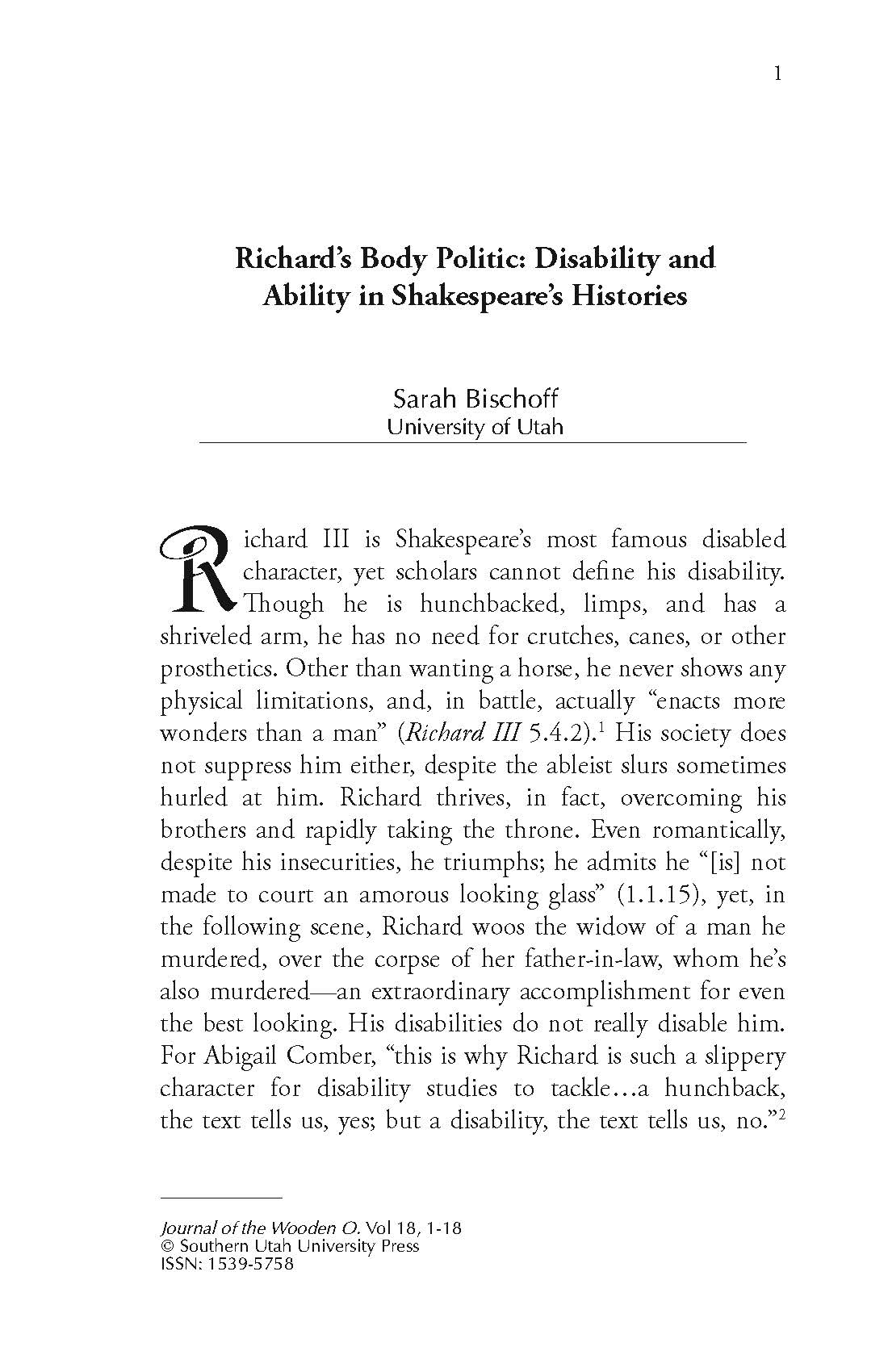Richard’s Body Politic: Disability and Ability in Shakespeare’s Histories
Main Article Content
Abstract
Richard III is Shakespeare’s most famous disabled character, yet scholars cannot define his disability. Though he is hunchbacked, limps, and has a shriveled arm, he has no need for crutches, canes, or other prosthetics. Other than wanting a horse, he never shows any physical limitations, and, in battle, actually “enacts more wonders than a man” (Richard III 5.4.2).1 His society does not suppress him either, despite the ableist slurs sometimes hurled at him. Richard thrives, in fact, overcoming his brothers and rapidly taking the throne. Even romantically, despite his insecurities, he triumphs; he admits he “[is] not made to court an amorous looking glass” (1.1.15), yet, in the following scene, Richard woos the widow of a man he murdered, over the corpse of her father-in-law, whom he’s also murdered—an extraordinary accomplishment for even the best looking. His disabilities do not really disable him. For Abigail Comber, “this is why Richard is such a slippery character for disability studies to tackle…a hunchback, the text tells us, yes; but a disability, the text tells us, no.”2
